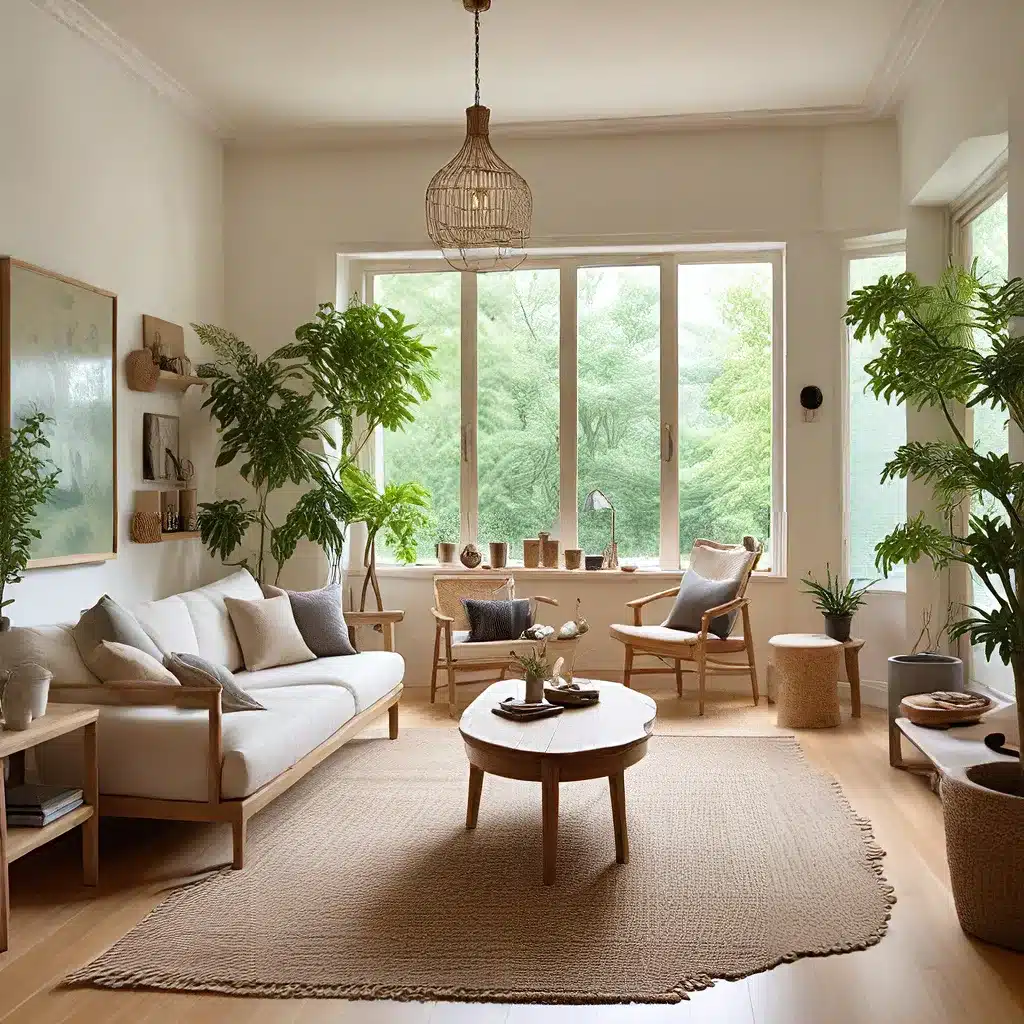
The Rise of Mindful Living and Its Impact on Interior Design
Sustainable design and mindful living have become increasingly intertwined in recent years, as homeowners seek to create living spaces that not only reflect their personal style but also support their overall well-being. This shift in priorities has led to a growing demand for interior design approaches that prioritize environmental consciousness and holistic wellness.
One of the driving forces behind this trend is the recognition that our homes and the way we design them can have a profound impact on our mental, emotional, and physical health. As we’ve spent more time at home during the pandemic, many of us have come to realize the importance of building a nurturing and supportive home environment. Renowned interior designer Joanna Thornhill explores this concept in her latest book, “The New Mindful Home,” which delves into the intersection of mindfulness and interior design.
Thornhill’s work highlights how our “caveman brain” – the primal part of our brain that is still wired for safety and survival – can be profoundly impacted by the design choices we make in our homes. Certain shapes, materials, and spatial arrangements can trigger feelings of unease or discomfort, even if we’re not consciously aware of it. By understanding these subconscious responses, we can create home environments that actively support our well-being and foster a sense of calm, contentment, and connection.
Sustainable Design Strategies for Mindful Living
As the focus on mindful living continues to grow, interior designers and homeowners alike are exploring a range of sustainable design strategies to create spaces that are both visually appealing and emotionally nourishing. Here are some of the top sustainable interior design ideas to consider:
1. Embrace Natural Materials
Natural materials, such as rattan, wood, and jute, not only lend a warm and organic feel to a space but also have a lower environmental impact compared to synthetic alternatives. These materials are often renewable, biodegradable, and require minimal processing, making them a more sustainable choice for furniture, lighting, and decor.
2. Incorporate Biophilic Design
Biophilic design is the practice of incorporating elements of nature into the built environment, with the goal of fostering a deeper connection between people and the natural world. This can be achieved through the strategic placement of indoor plants, natural light, and natural textures throughout the home. By bringing the outdoors in, you can create a soothing and rejuvenating atmosphere that supports overall well-being.
3. Optimize Energy Efficiency
Sustainable interior design goes beyond the aesthetic; it also considers the environmental impact of a home’s energy consumption. Incorporating energy-efficient lighting, such as LED bulbs, and smart home technology like programmable thermostats can help reduce your carbon footprint and lower your utility bills in the long run.
4. Prioritize Recycled and Repurposed Materials
When it comes to sustainable interior design, repurposing and upcycling existing materials can be a highly creative and eco-friendly approach. Whether it’s transforming vintage furniture into new pieces or using recycled glass or metal for decorative elements, this strategy not only reduces waste but also adds a unique and personalized touch to your home.
Designing for Wellness: The Importance of Mindful Spaces
Beyond the environmental considerations, mindful interior design also focuses on creating spaces that support physical, mental, and emotional well-being. By carefully curating the elements within a room, designers can help homeowners cultivate a sense of tranquility, focus, and balance.
One key aspect of this approach is understanding how our subconscious responses to certain design elements can impact our overall well-being. As mentioned earlier, our “caveman brain” can react to sharp edges, large open spaces, and other design features in ways that may trigger feelings of stress or anxiety, even if we’re not consciously aware of it.
By considering these primal reactions and incorporating design strategies that promote a sense of safety and comfort, interior designers can help create home environments that nurture our innate need for rest, relaxation, and restoration. This might involve incorporating soft, curved furniture, cozy nooks, and natural lighting to foster a sense of security and calmness.
Bringing Sustainable and Mindful Design to Life
At Urban Grace Interiors Inc., we understand the importance of balancing aesthetics and functionality with environmental consciousness and holistic wellness. Our team of experienced interior designers is dedicated to creating customized solutions that reflect our clients’ unique needs and preferences while incorporating sustainable design principles and mindful living concepts.
Whether you’re renovating your home or starting from scratch, we can help you explore a wide range of sustainable materials, biophilic design elements, and energy-efficient technologies to craft a living space that not only looks beautiful but also supports your overall well-being. By collaborating closely with our clients, we can develop personalized design strategies that seamlessly integrate sustainability and mindfulness into the heart of your home.
Embrace the Power of Conscious Design
As we continue to navigate the complexities of modern life, the demand for sustainable and mindful interior design solutions is only set to grow. By embracing these principles, homeowners can create living spaces that not only reflect their personal style but also contribute to a more eco-conscious and wellness-focused future.
At Urban Grace Interiors Inc., we are passionate about empowering our clients to craft conscious spaces that nourish the body, mind, and soul. Through our personalized design approach and commitment to sustainability, we can help you transform your home into a true sanctuary – a place where you can thrive, recharge, and find the peace and fulfillment you deserve.

